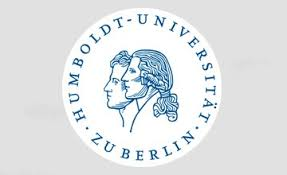Kursbeschreibung
Thema des geplanten Seminars ist der Atiyah-Singer-Indexsatz, der als ein Meilenstein der Mathematik des 20. Jahrhunderts gilt und eine Brücke zwischen der Theorie partieller Differentialgleichungen, Geometrie und Topologie ist. Das Seminar beginnt, als Motivation des Folgenden, mit einer Vorstellung des Satzes von Gauß-Bonnet (nach [Lee]). Dieser Satz gibt eine Gleichung zwischen einer natürlichen Zahl, die nur von der Topologie einer Fläche abhängt, und einem Integral der Krümmung über die Fläche. Die Faszination dieser viel benutzten Gleichung stammt daher, dass sie jeder möglichen Geometrie auf der Fläche durch ein Integral dieselbe natürliche Zahl zuordnet. Eine Verallgemeinerung des Satzes auf höhere Dimensionen kann leicht aus dem Indexsatz abgeleitet werden. Diesen werden wir zunächst für Diracoperatoren beweisen und folgen dabei [Ebert], einem Zugang, der den besonderen Charme hat, dass er weder Pseudodifferentialoperatoren noch Wärmeleitungsgleichungen benötigt. Auf dem Weg werden wir viel auch in anderem Kontext Nützliches über elliptische Regularität, Fredholmoperatoren und Glättungsoperatoren lernen. Anschließend werden wir je nach Zahl und Interesse der Teilnehmer eine kurze Einführung in K-Theorie und charakteristische Klassen geben und, der Quelle [Gilkey] folgend, den Satz für beliebige elliptische Operatoren beweisen, sowie auf Grundlage der Originalarbeiten [Atiyah-Patodi-Singer], [Atiyah-Bott-Patodi] den entsprechenden Satz für Mannigfaltigkeiten mit Rand zeigen. Zuguterletzt stellen wir, falls die Zeit es erlaubt, auch eine jüngst erzielte Lorentzsche Version des Theorems [Bär-Strohmaier] vor und diskutieren kurz seine physikalische Interpretation in der Quantenfeldtheorie.
Voraussetzungen des Seminars, das vorrangig für fortgeschrittene Bachelorstudenten, aber auch für Masterstudenten gedacht ist, sind grundlegende Kenntnisse in Topologie, Funktionalanalysis und (in geringerem Maße) Differentialgeometrie. Letztere werden auch in Form eines Skripts zur Verfügung gestellt werden.
Zeit und Ort des Seminars: Mo 13-15 Uhr, RUD25-1.011. Auf Wunsch wird das Seminar ganz oder teilweise als Blockseminar im Februar 2020 angeboten.
Anmeldung: bitte so bald wie möglich unverbindliche Voranmeldung durch E-mail an den Dozenten, Vorbesprechung am ersten Termin (21.Oktober, am 14.10. ist wegen des Dies Academicus keine Veranstaltung). Der erste Vortrag mit Einführung und Überblick wird in der zweiten Sitzung (28.10.) vom Dozenten gehalten werden.
Der Dozent steht für die Unterstützung der Vorbereitung Ihres Vortrags in der Sprechstunde sowie zusätzlich vereinbarten Terminen zur Verfügung.
Leistungsnachweise, die Teilnahmevoraussetzung sind: Analysis 1-4, Lineare Algebra 1-2, Funktionalanalysis 1
Empfohlene Literatur
[Atiyah-Bott-Patodi]: Michael Atiyah, Raoul Bott, Vijay Kumar Patodi: On the Heat Equation and the Index Theorem. Inv.Math. 19, 279-330 (1973)
[Atiyah-Patodi-Singer]: Michael Atiyah, Vijay Kumar Patodi, Israel Singer: Spectral asymmetry and Riemannian Geometry. I. Math. Proc. Camb. Phil. Soc. 77, 43 (1975)
[Bär-Strohmaier]: Christian Bär, Alexander Strohmaier: An index theorem for Lorentzian manifolds with compact spacelike Cauchy boundary. arXiv:1506.00959
[Ebert]: Johannes Ebert: A Lecture Course on the Atiyah-Singer Index Theorem, https://ivv5hpp.uni-muenster.de/u/jeber_02/skripten/mainfile.pdf
[Gilkey]: Peter B. Gilkey: Invariance theory, the heat equation, and the Atiyah-Singer Index Theorem. https://pages.uoregon.edu/gilkey/dirPDF/InvarianceTheory1Ed.pdf
[Lee]: John M. Lee: Riemannian Manifolds. An Introduction to Curvature (= Graduate Texts in Mathematics 176). Springer, New York NY u. a. 1997, ISBN 0-387-98322-8
Description of the course
The index theorem is one of the few milestones of mathematics in the 20th century. After a motivational presentation (following [Lee]) of the Gauss-Bonnet theorem, which inspired some of the foundational ideas of the index theorem, we will prove the theorem in a series of talks that follows [Ebert], an approach with the advantage of being extremely non-technical. On the way we will learn a lot about elliptic regularity, Fredholm theory and smoothing operators. Depending on the interest we will give a short introduction to K theory and characteristic classes and, following [Gilkey], prove the theorem for general elliptic operators, and/or prove the version for manifolds-with-boundary on the basis of the original research papers [Atiyah-Patodi-Singer] and [Atiyah-Bott-Patodi]. Last not least we review a recent generalization adapted to Lorentzian geometry [Bär-Strohmaier] and its interpretation in quantum field theory.
Time and place of the seminar: Mon 1-3 pm, RUD25-1.011 (if desired, partially or entirely as a block seminar in February 2020)
Inscription: noncommittal inscription as soon as possible via email to me, first meeting October 21th. I will also give the first talk with an introduction and an overview the 28th of October.
I will be available for supporting you in the preparation of your talk.
Passed exams you will need for this course: Analysis 1-4, Lineare Algebra 1-2, Differential geometry
Recommended Literature
We will use primarily the following literature:
[Atiyah-Bott-Patodi]: Michael Atiyah, Raoul Bott, Vijay Kumar Patodi: On the Heat Equation and the Index Theorem. Inv.Math. 19, 279-330 (1973)
[Atiyah-Patodi-Singer]: Michael Atiyah, Vijay Kumar Patodi, Israel Singer: Spectral asymmetry and Riemannian Geometry. I. Math. Proc. Camb. Phil. Soc. 77, 43 (1975)
[Bär-Strohmaier]: Christian Bär, Alexander Strohmaier: An index theorem for Lorentzian manifolds with compact spacelike Cauchy boundary. arXiv:1506.00959
[Ebert]: Johannes Ebert: A Lecture Course on the Atiyah-Singer Index Theorem, https://ivv5hpp.uni-muenster.de/u/jeber_02/skripten/mainfile.pdf
[Gilkey]: Peter B. Gilkey: Invariance theory, the heat equation, and the Atiyah-Singer Index Theorem. https://pages.uoregon.edu/gilkey/dirPDF/InvarianceTheory1Ed.pdf
[Lee]: John M. Lee: Riemannian Manifolds. An Introduction to Curvature (= Graduate Texts in Mathematics 176). Springer, New York NY u. a. 1997, ISBN 0-387-98322-8
